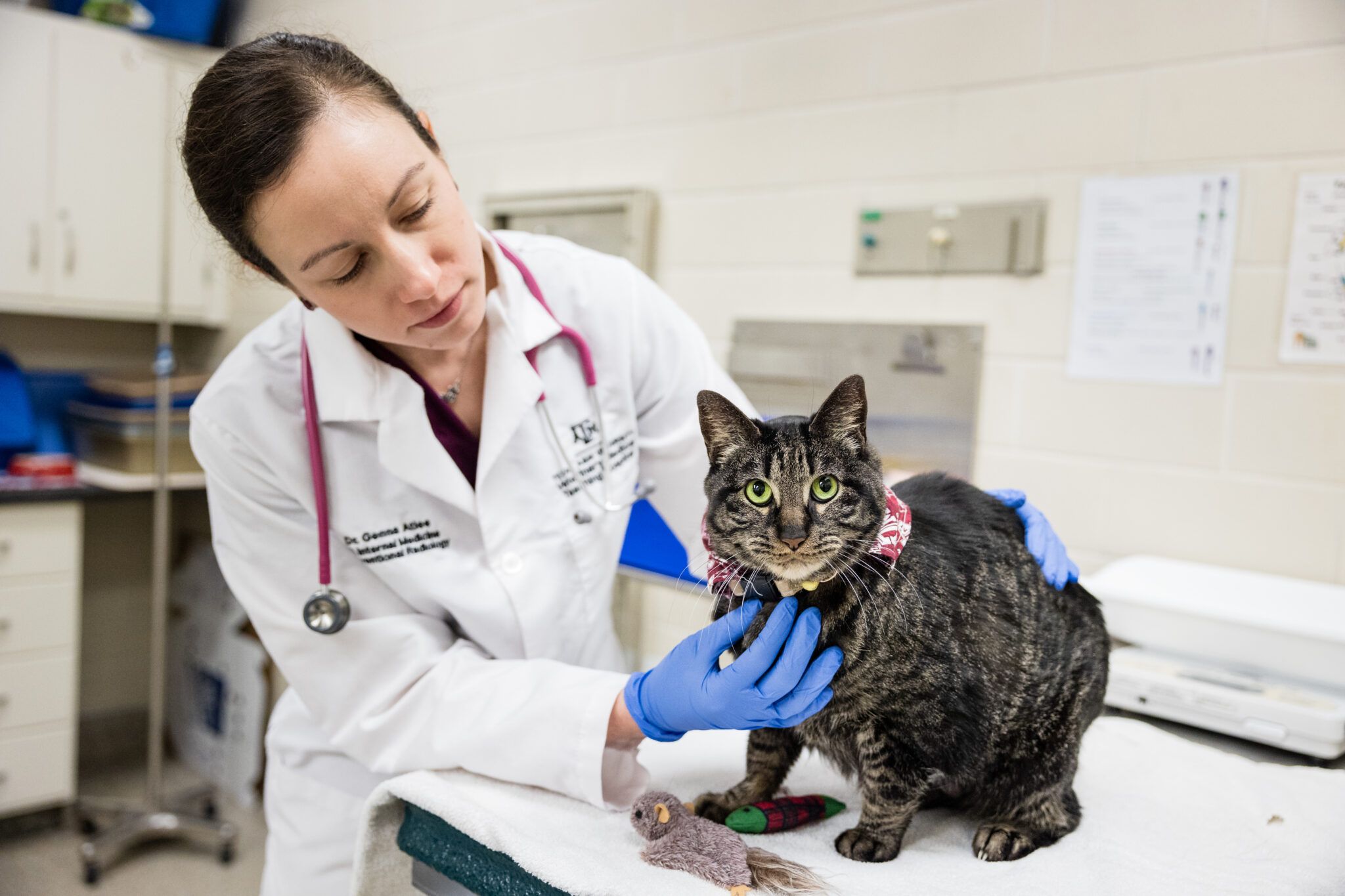Cat with chronic kidney disease finds renewed energy from clinical trial
The new study from Texas A&M School of Veterinary Medicine & Biomedical Sciences sees positive initial results
This article was updated on January 29, 2024.
Kobe, a 14-year-old tabby cat, was diagnosed with chronic kidney disease (CKD), which causes a cat’s kidneys to slowly lose function, last summer.1,2 Among the many different kidney diseases that may affect cats, CKD is the most common.2 According to Texas A&M School of Veterinary Medicine & Biomedical Sciences, most cats with the disease only survive a few years after showing symptoms, which can make the diagnosis extremely distressing for pet owners. It is also a slowly evolving disease that worsens as it progresses, negatively impacting a patient’s quality of life.
“He may be 14, but he’s so active. We’ve even been working this last year to get his weight down, and I’m proud to say that it’s gone really well,” said owner, Gabrielle Sakel in an organizational release.1
Kobe was a participant in Texas A&M’s new clinical trial designed for cats with stage 2 to stage 4 kidney disease. The trial uses Porus One, a powdery material, to draw toxins from the intestinal tract so they don’t enter the bloodstream.
An oral absorbent, Porus One is a unique material that is classified as a supplement, according to a Dechra spokesperson. Each tiny particle is an intricately tunneled sphere, giving each daily dose a huge surface area, comparable to the size of a tennis court.1 “The Porus One is not absorbed by the cat’s digestive system at all,” said Audrey Cook, BVM&S, Msc Vet Ed, DACVIM, DECVIM, DABVP (Feline), a professor in the department of small animal clinical sciences who is co-leading the trial with Genna Atiee, DVM, DACVIM (SAIM), a clinical assistant professor. “It just passes through and grabs onto the toxins that we don’t want to get into the bloodstream. Then, the cats poop it all out.”1
Although similar products have been used successfully in humans with kidney disease, there hasn’t been much research on their effect in cats.1 “Kidney disease is very common in older cats, so Kobe’s veterinarians had been keeping an eye on his blood levels,” Sakel said. “During one visit, they noticed that he had stage two kidney disease. At the time, it just so happened that I was working at Texas A&M’s Gastrointestinal Laboratory [and was told] about the new trial.”1
Genna Atiee, DVM, DACVIM (SAIM), a clinical assistant professor in the Texas A&M University School of Veterinary Medicine & Biomedical Sciences, examines Kobe. (Photo credit: Jason Nitsch ’14, Texas A&M University Division of Marketing and Communications)

“Cats with chronic kidney disease have trouble eliminating certain kinds of toxins, which start to build up in their blood, because their kidneys are not working properly,” said Cook. “Some of these toxins are created in the intestinal tract. When they are absorbed into the bloodstream, they make the patient feel unwell and also worsen the disease. Porus One is [given] to kidney disease patients that we anticipate will help break that cycle.”1
For Kobe, a diagnosis came early, and with the addition of being a participant in this trial, researchers have seen successful results. The 14-year-old has been reported to have more energy, running and jumping like he had been before CKD.
“[CKD] is the No. 1 fatal disease for geriatric cats,” Cook said. “Because it’s something every veterinarian sees, we really wanted to find a way to slow down the disease progression and help feline patients feel better.”1
Kobe has completed the trial and he will continue taking Porus One to manage his disease. Although his success bodes well for the clinical trial, Cook and Atiee still need more cats to participate.
“We’re still looking for applicants,” Cook said. “Cats must have chronic kidney disease and be at least 7 years old to participate. They also need to like wet food and be able to make a total of five visits to the Small Animal Teaching Hospital in College Station.”1
For more information about applying to the clinical trial, cat owners can contact Lisa Even, manager of the office of Veterinary Clinical Investigation, or visit the trial’s “Study Pages” website.
References
- Texas A&M veterinary clinical trial gives tabby cat with chronic kidney disease a second chance at life. News release. Texas A&M School of Veterinary Medicine & Biomedical Sciences. January 23, 2024. Accessed January 26, 2024. https://today.tamu.edu/2024/01/23/clinical-trial-gives-cat-with-kidney-disease-a-second-chance/
- Chronic kidney disease. Cornell University College of Veterinary Medicine. Accessed January 26, 2024. https://www.vet.cornell.edu/departments-centers-and-institutes/cornell-feline-health-center/health-information/feline-health-topics/chronic-kidney-disease